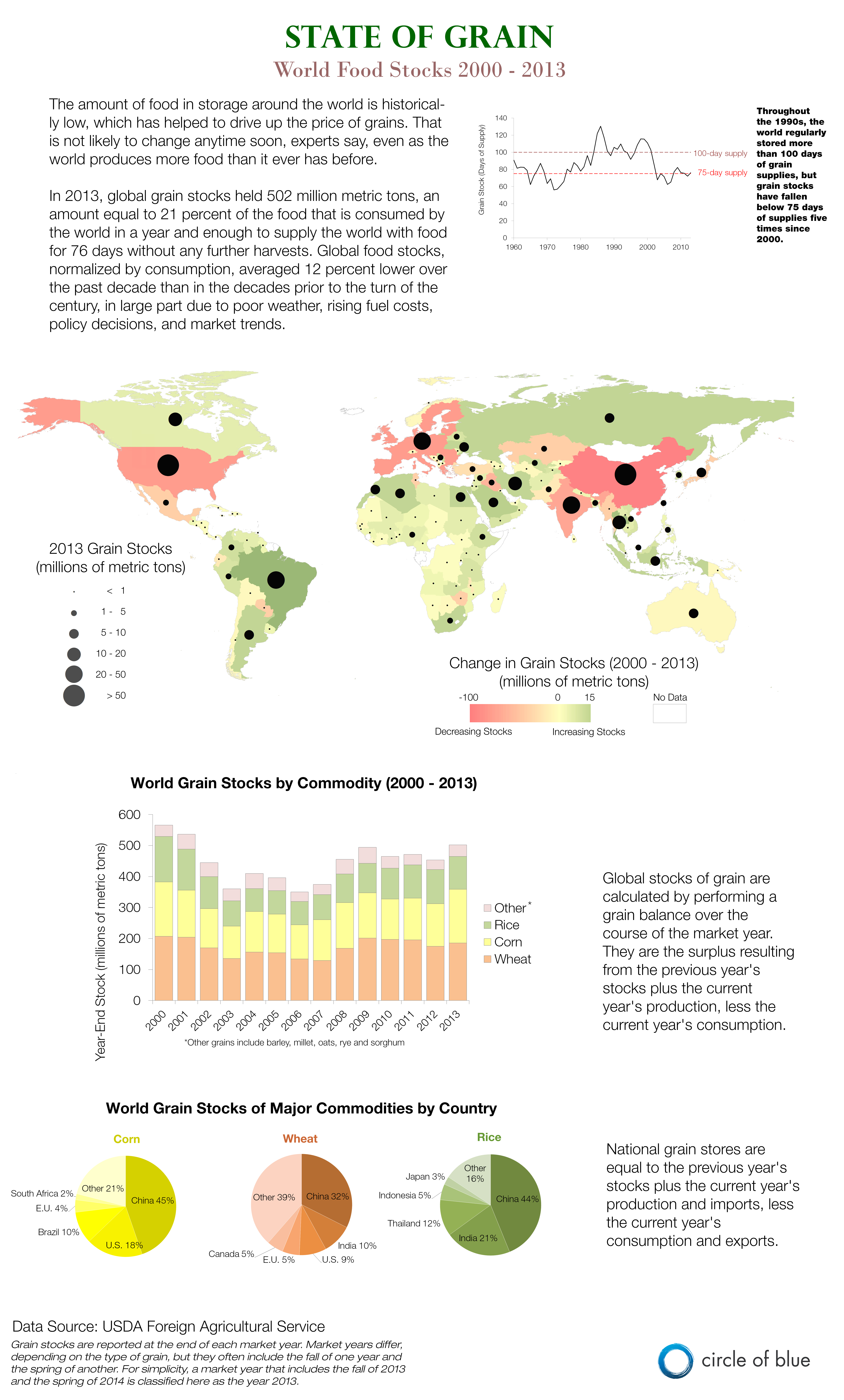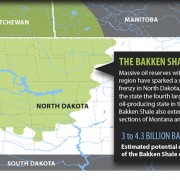Infographic: World Food Supplies Concentrated in Brazil, China, Europe, India, and United States
The amount of food in storage around the world is on the rise, but stocks are still historically low.
In 2013, global grain stocks held 502 million metric tons, an amount equal to 21 percent of the food that is consumed by the world in a year and enough to supply the world with food for 76 days without any further harvests. Global food stocks averaged 12 percent lower over the past decade than in the decades prior to the turn of the 21st century, in large part due to poor weather, rising fuel costs, policy decisions, and market trends.
Global stocks of grain are calculated by performing a grain balance over the course of the market year. They are the surplus resulting from the previous year’s stocks plus the current year’s production, less the current year’s consumption.National grain stores are equal to the previous year’s stocks plus the current year’s production and imports, less the current year’s consumption and exports.
Grain stocks are reported by the United States Department of Agriculture’s Foreign Agricultural Service at the end of each market year. Market years differ depending on the type of grain, but they often include the fall of one year and the spring of another. For simplicity, a market year that includes the fall of 2013 and the spring of 2014, for example, is classified here as the year 2013.
The color change in the map corresponds to changes in grain stocks since 2000, while the size of the dot corresponds to the amount of grain stocks reported for 2013. As can be seen in the map, the countries with the largest grain stocks such as China, India, the European Union, and the United States have actually experienced decreases in their stocks over the past decade, with the exception of Brazil, which has emerged as an agricultural powerhouse. Meanwhile, countries with mid-range stocks like Iran, Saudi Arabia, and Thailand are seeing increases in grain reserves. Countries with historically smaller grain stocks, like many African nations, have seen relatively little change. Click the image below to learn more.
Codi Yeager-Kozacek contributed to this infographic, which was made to accompany Yeager-Kozacek’s article, World Food Supplies Recover From Drought and Reach 15-Year High. Contact Codi Yeager
is both a scientist and a journalist, she holds an MS in Environmental Engineering from Michigan Technological University, and she brings proficiency in ESRI’s ArcGIS mapping software.










Leave a Reply
Want to join the discussion?Feel free to contribute!